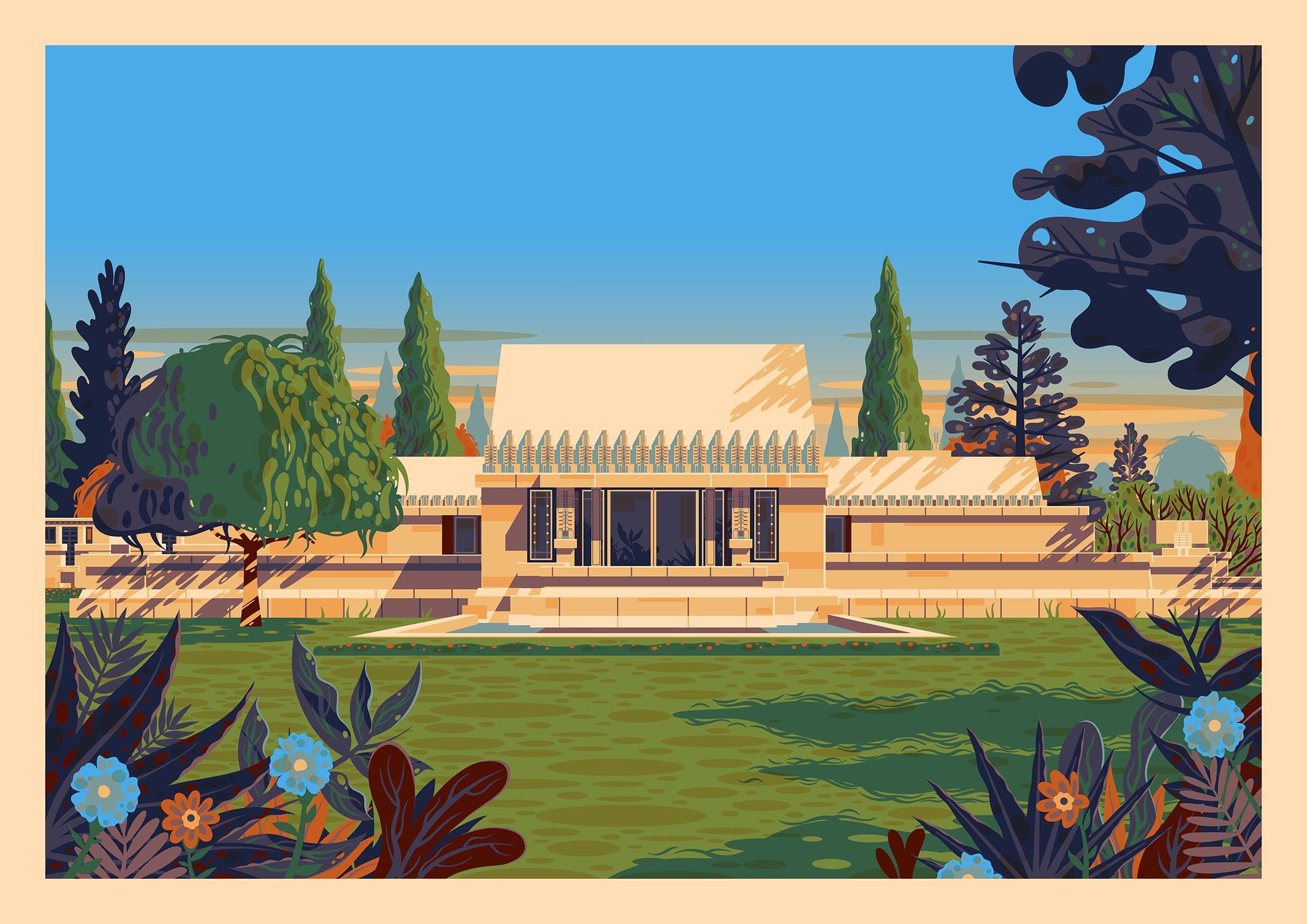
Exploring Frank Lloyd Wright’s Iconic Architecture in Los Angeles
by George Townley
·
Los Angeles, with its sprawling cityscape and rich cultural history, is home to some of Frank Lloyd Wright’s most iconic architectural masterpieces. Known for his organic approach to design, Wright seamlessly blended modernism with nature, leaving behind a legacy of homes that continue to captivate and inspire. Among his most celebrated works in Los Angeles are the Store House, Ennis House, Samuel Freeman House, George Sturges House, and Hollyhock House. In this post, we’ll take a closer look at these structures, and we’ll give a special mention to the Jon Sowden House before concluding.
1. The Storer House (1923)
Perched in the Hollywood Hills, the Storer House is one of Frank Lloyd Wright’s "textile block" houses, where he experimented with concrete blocks as both structural and decorative elements. Designed for Dr. John Storer, the house is inspired by Mayan motifs, with intricate geometric patterns giving it a unique, almost mystical quality.
Wright’s concept of "organic architecture" is reflected here, as the house blends effortlessly into its natural surroundings. Over time, the Storer House has undergone careful restorations, preserving its historical significance while ensuring it remains a beacon of innovative design.

2. Ennis House (1924)
The Ennis House is perhaps the most iconic of Wright’s Los Angeles homes. With its commanding position overlooking the city and its monumental structure, it’s easy to see why. Designed for Charles and Mabel Ennis, this textile block house reflects Wright’s fascination with pre-Columbian architecture, especially Mayan temples.
The house’s intricate concrete blocks form both the structure and the decoration, creating an almost fortress-like aesthetic. Over the years, the Ennis House has featured in numerous films and TV shows, adding to its legendary status. Though it has faced challenges from time and earthquakes, extensive restoration efforts have helped preserve its grandeur.

3. Samuel Freeman House (1924)
Located in the Hollywood Hills, the Samuel Freeman House is another of Wright’s experimental textile block homes. Commissioned by Samuel and Harriet Freeman, this modest yet striking house was intended to be a blend of art and architecture. Its unique design became a gathering place for intellectuals, artists, and writers, contributing to LA's cultural history as much as its architectural legacy.
Though smaller in scale than some of Wright’s other works, the Freeman House is packed with artistic flair and charm. Its precarious hillside location and exposure to earthquakes have caused significant damage, but preservation efforts are ongoing to maintain this important piece of Wright’s LA portfolio.

4. George Sturges House (1939)
The George Sturges House, located in Brentwood, marks a departure from Wright’s earlier concrete block homes. This house is part of Wright’s "Usonian" series, which were designed to be more affordable, functional, and suited to middle-class Americans. Built for engineer George Sturges, the house reflects Wright's belief in simplicity and harmony with nature.
The Sturges House is a single-story structure with a cantilevered roof, allowing it to float above its sloped site. It’s compact but ingeniously designed, with an open floor plan that maximizes space and creates a seamless flow between the interior and the surrounding landscape. The house’s use of natural materials, clean lines, and integrated design elements make it one of Wright’s most understated yet elegant homes in LA.

5. Hollyhock House (1921)
Hollyhock House, located in Barnsdall Park, stands as one of Wright’s earliest works in Los Angeles. It was commissioned by Aline Barnsdall, an oil heiress and arts patron, who intended it to be the centerpiece of an arts colony. While the larger project was never realized, the house itself became a cornerstone of LA's architectural history.
Named after Barnsdall’s favorite flower, the hollyhock, the house incorporates stylized versions of the bloom throughout its design. Wright’s signature emphasis on nature is clear, but Hollyhock House is also more theatrical in its design, resembling a modern-day temple with its dramatic terraces and ornamental motifs. In 2019, it was named a UNESCO World Heritage Site, cementing its place in the pantheon of great architectural works.

Honorable Mention: John Sowden House (1926)
A special mention must be made of the Jon Sowden House, designed by Lloyd Wright, Frank Lloyd Wright’s son, in 1926. Known for its jagged, tooth-like façade, the house is an excellent example of the Mayan Revival style that captivated the era. Its imposing design, with fortress-like elements, has made it a focal point for architectural enthusiasts and film directors alike.
Although the house was not designed by Frank Lloyd Wright himself, Lloyd Wright's work was undoubtedly influenced by his father’s architectural philosophies, making the Jon Sowden House a fitting tribute to the family’s lasting impact on LA’s architectural landscape.

Conclusion
Frank Lloyd Wright’s architecture in Los Angeles is a testament to his visionary genius. From the bold, blocky designs of his textile block houses to the more understated elegance of the Sturges House, Wright’s influence on the city is profound. His ability to harmonize built environments with nature, while experimenting with materials and forms, has left an indelible mark on LA’s architectural heritage.